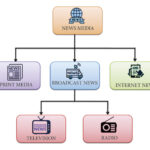
Introduction
The way individuals and businesses store, manage, and process data has been transformed by cloud computing. It enables seamless access to computing resources over the internet, eliminating the need for expensive on-premise infrastructure. With growing adoption across industries, cloud computing has become a crucial component of digital transformation. This blog explores the fundamentals of cloud computing, its benefits, key components, deployment models, security concerns, and future trends.
What is Cloud Computing?
Cloud computing refers to the delivery of computing services—including servers, storage, databases, networking, software, and analytics—over the internet, commonly known as “the cloud.” It allows users to access resources on-demand, ensuring flexibility, scalability, and cost-efficiency.
Importance of Cloud Computing
Cost-Efficiency: Reduces the need for upfront investments in IT infrastructure.
Scalability: Allows businesses to scale resources up or down based on demand.
Flexibility: Enables remote access to applications and data from any location.
Security & Compliance: Offers robust security features, data encryption, and compliance with global standards.
Disaster Recovery: Ensures business continuity with automated backups and recovery options.
Key Components of Cloud Computing
1. Infrastructure as a Service (IaaS)
Provides virtualized computing resources over the internet. Examples include:
Amazon Web Services (AWS)
Google Compute Engine (GCE)
Microsoft Azure Virtual Machines
2. Platform as a Service (PaaS)
Enables developers to build, test, and deploy applications without managing underlying infrastructure. Examples include:
Google App Engine
Microsoft Azure App Services
AWS Elastic Beanstalk
3. Software as a Service (SaaS)
uses the internet to deliver software applications on a subscription basis.
Google Workspace
Microsoft 365
Salesforce
Cloud Deployment Models
1. Public Cloud
Hosted by third-party providers and accessible to multiple users.
Examples: AWS, Google Cloud, Microsoft Azure.
2. Private Cloud
Dedicated cloud infrastructure for a single organization.
Provides greater control and security.
3. Hybrid Cloud
Combines both public and private clouds for a flexible IT solution.
Allows businesses to balance security and scalability.
4. Multi-Cloud
Utilizes services from multiple cloud providers.
Reduces dependency on a single vendor and enhances resilience.
Security Concerns in Cloud Computing
Data Privacy & Compliance: Ensuring adherence to regulatory standards such as GDPR, HIPAA.
Cybersecurity Threats: Protection against hacking, phishing, and malware attacks.
Data Loss & Backup: Implementing reliable disaster recovery solutions.
Access Control: Ensuring proper authentication and authorization protocols.
Future Trends in Cloud Computing
Edge Computing: Reducing latency by processing data closer to the source.
Artificial Intelligence & Machine Learning Integration: Enhancing automation and predictive analytics.
Serverless Computing: Enabling developers to run applications without managing servers.
Quantum Computing: Transforming computational capabilities for complex problem-solving.
Sustainability & Green Cloud Computing: Focusing on energy-efficient data centers and eco-friendly solutions.
Conclusion
Cloud computing is reshaping industries by providing scalable, secure, and cost-effective IT solutions. As businesses continue to embrace digital transformation, leveraging cloud technology will be critical for staying competitive. Whether you’re a startup, enterprise, or individual user, adopting cloud computing can drive efficiency, innovation, and long-term growth.











